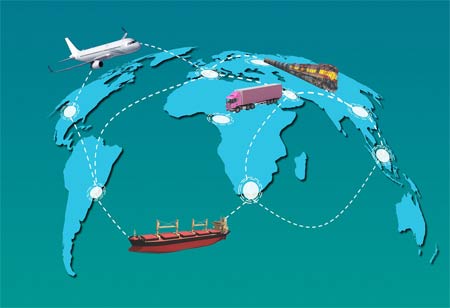THANK YOU FOR SUBSCRIBING
THANK YOU FOR SUBSCRIBING

By
Logistics Transportation Review | Tuesday, September 17, 2024
Stay ahead of the industry with exclusive feature stories on the top companies, expert insights and the latest news delivered straight to your inbox. Subscribe today.
Alleviating port congestion involves using advanced technologies, expanding infrastructure, optimizing scheduling, improving intermodal connectivity and leveraging data analytics to enhance efficiency and support global trade.
FREMONT CA: Alleviating port congestion in maritime logistics is a critical challenge that requires innovative solutions and strategic management. To address this issue, stakeholders are exploring a range of approaches, including advanced port management technologies, improved infrastructure and streamlined customs procedures. Additionally, the adoption of predictive analytics and real-time data can enhance operational planning and coordination, reducing bottlenecks and optimizing throughput. By implementing these strategies, the maritime logistics industry aims to improve port efficiency, facilitate smoother cargo flow and support the growth of international trade.
Implement Advanced Port Management Systems
Modern port management systems are modifying port operations by integrating various aspects of the workflow, such as vessel scheduling and cargo tracking. Advanced systems, including Terminal Operating Systems (TOS) and Port Community Systems (PCS), streamline processes and enhance real-time visibility. TOS platforms optimize container movements within terminals, while PCS facilitates communication between stakeholders, reducing paperwork and accelerating cargo clearance.
Expand Port Infrastructure and Capacity
Expanding port infrastructure involves both physical enlargement and enhancement of existing facilities to handle increased cargo volumes. New container terminals, deepened shipping channels, and modern cargo handling equipment are critical components. Developing inland ports can also help decongest seaports by shifting some operations away from crowded areas.
Optimise Vessel Scheduling and Berthing Operations
Efficient vessel scheduling and berthing are essential to minimizing port congestion. Implementing advanced Vessel Traffic Management Systems (VTMS) and berth allocation optimization can reduce waiting times and improve throughput. Just-in-Time (JIT) arrival concepts and collaborative decision-making platforms further enhance scheduling efficiency and coordination among stakeholders.
Enhance Intermodal Connectivity
Improving intermodal connectivity is vital for efficient cargo movement beyond port gates. On-dock rail facilities, dedicated freight corridors, and truck appointment systems help streamline transport. Developing inland ports and dry ports can extend a seaport’s reach and alleviate congestion at the port itself.
Leverage Data Analytics and Artificial Intelligence
Data analytics and artificial intelligence (AI) are transforming port operations by providing insights and optimizing processes. Predictive analytics can forecast cargo volumes, while AI-driven autonomous vehicles and equipment enhance efficiency. Big data analytics helps identify and address blockages, improving overall operational performance.
Implement Extended Gate Hours and Off-Peak Operations
Extending operational hours and promoting off-peak cargo movements can alleviate port congestion by distributing traffic more evenly. Implementing 24/7 operations, incentivizing off-peak movements, and extending gate hours into the night can reduce congestion and improve throughput.
Foster Collaboration Among Port Stakeholders
Collaboration among port stakeholders is crucial for addressing congestion comprehensively. Centralized Port Community Systems (PCS) facilitate information exchange, while joint operating centers enable real-time decision-making. Public-private partnerships and regular stakeholder forums can drive innovation and efficiency in port operations.
Embrace Sustainable and Green Port Practices
Adopting sustainable practices can indirectly contribute to more efficient port operations. Shore power facilities reduce emissions, while green shipping incentives promote cleaner technologies. Renewable energy adoption and circular economy initiatives further enhance sustainability and operational efficiency in ports.
By adopting advanced technologies, optimizing port operations and enhancing coordination among stakeholders, the industry can significantly reduce delays and improve the flow of goods. As the maritime logistics sector continues to evolve, ongoing investment in these solutions will be essential for maintaining a competitive edge and fostering sustainable growth in international trade.
I agree We use cookies on this website to enhance your user experience. By clicking any link on this page you are giving your consent for us to set cookies. More info





